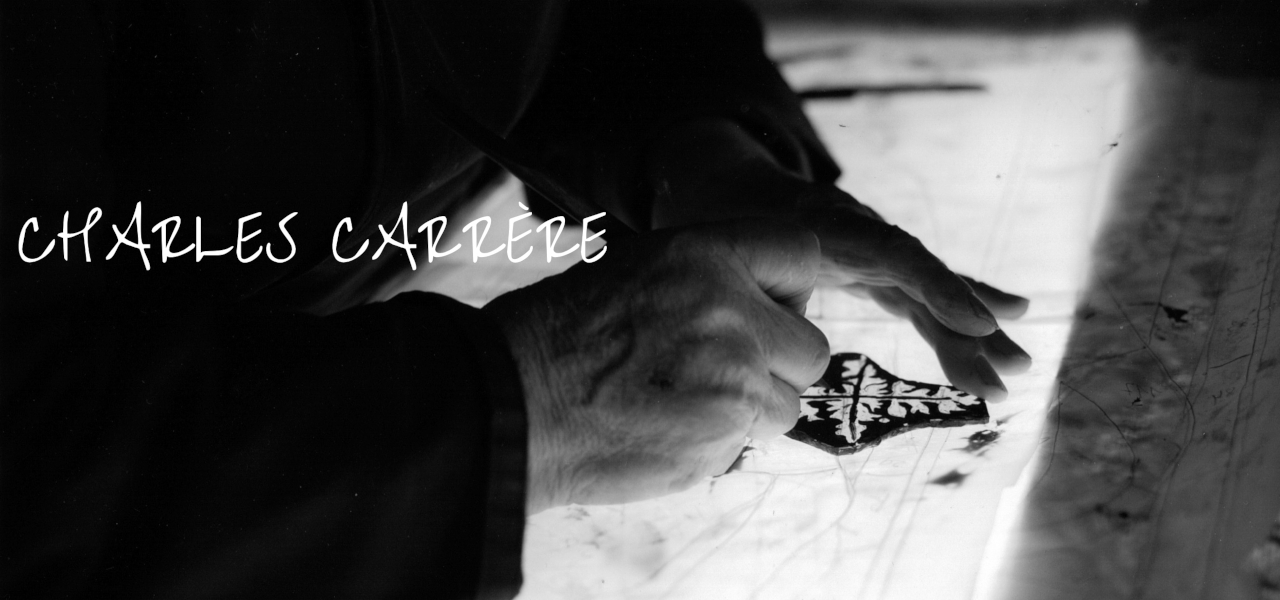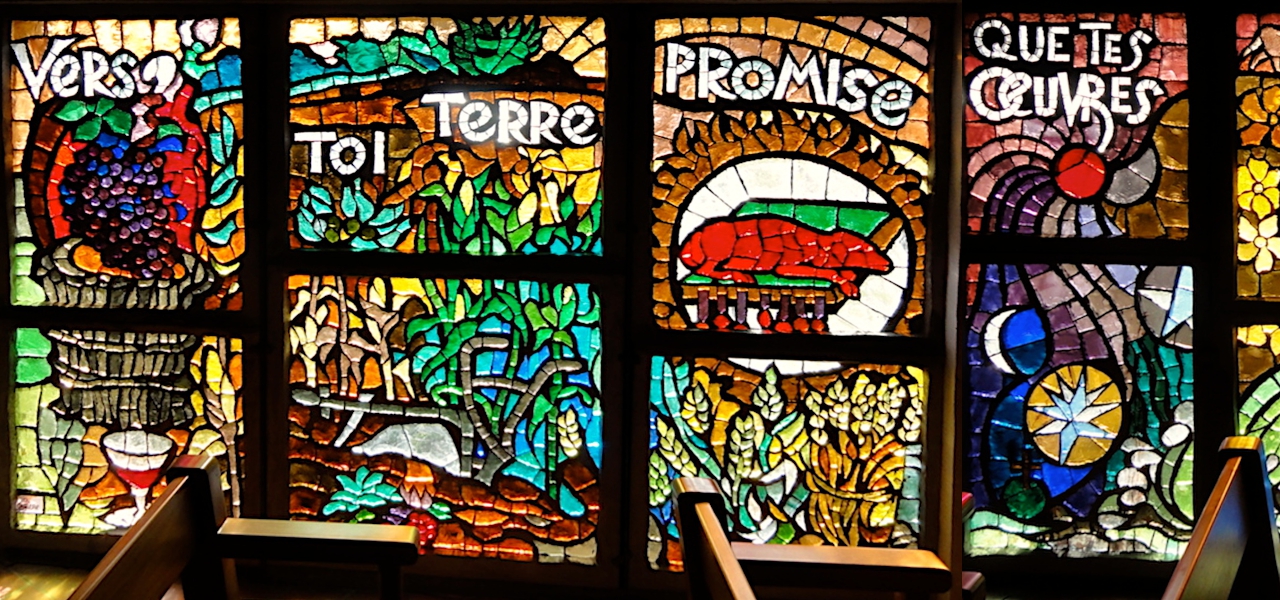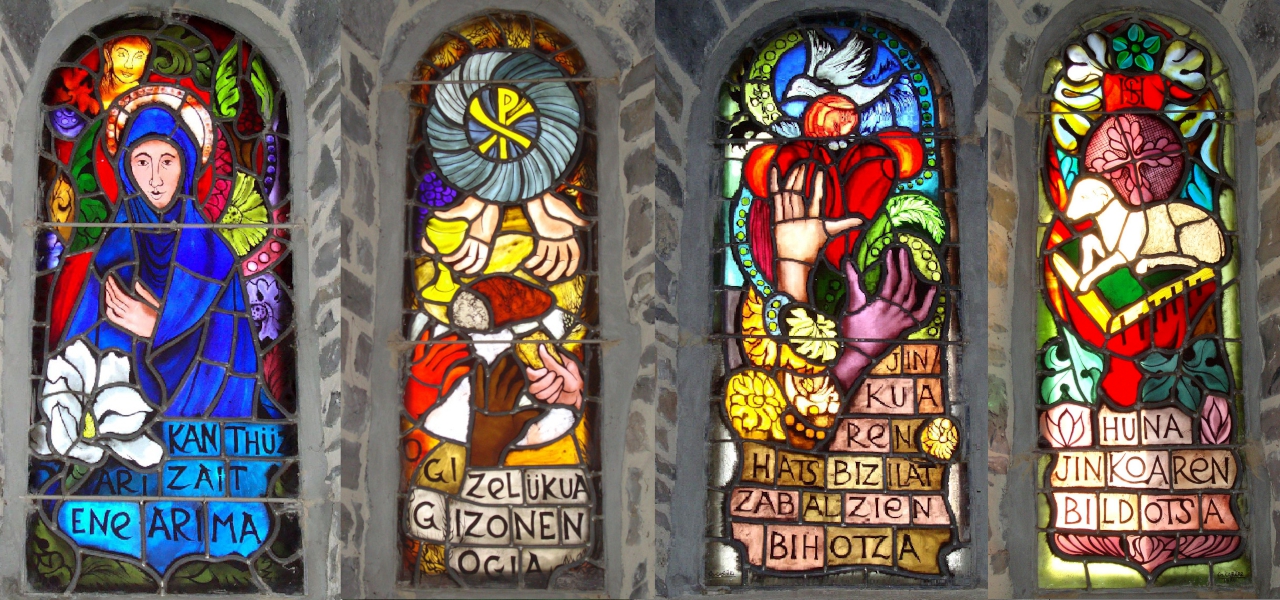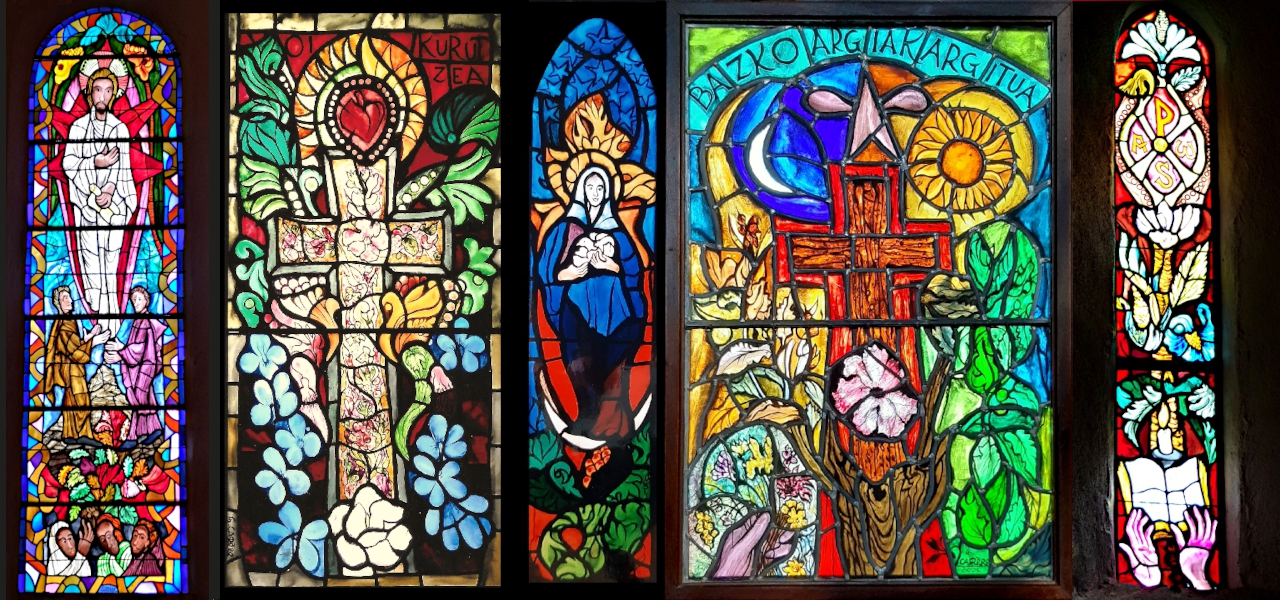As soon as he set up his own business, the orders did not stop coming in. During his military service, Charles Carrère had befriended a number of seminary priests. Once they were appointed priests, they came to him to work with him.
He has decorated many churches in the Basque Country and the Landes with his stained glass windows. His work can also be found in Reunion Island and Mali. The Master stained glass artist tells the story of the saints through his stained glass windows, while at the same time making pointed references.
Towards the end of his life he agreed to “tell” his religious and secular stained glass windows, in private but on camera, to explain the meanings and symbolism found in his works. On this site, we will develop the concept of “Focus on a work”. This will be an opportunity to reveal Charles Carrère’s explanations of the symbols integrated in his stained glass windows. Here is an example below:
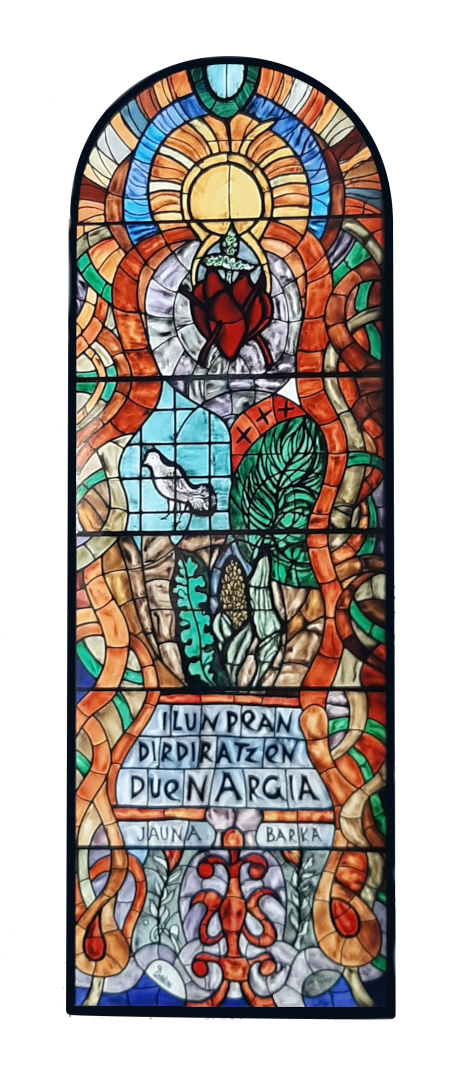
Charles Carrère is said to have confided that this stained glass window would be his last work. It is in Briscous.
This is what the Master stained glass artist says about it
There is a quote in Basque which means that Christ is the light that shines in the darkness : Ilun pran dirdiratzen duenargia
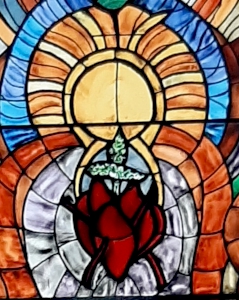
In this stained glass window, the sun represents light and a heart embodies love. This alludes to Christ defined as love and light.
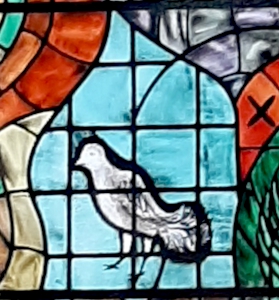
Just underneath is a bird in a cage, this bird evokes freedom and elevation. The freedom to believe and to rise or the freedom to remain in a cage.
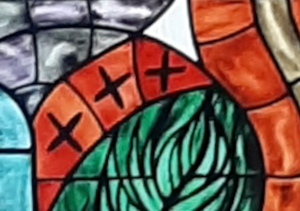
The orange ribbon shows three crosses: Christ’s, the good and the bad thief’s.
Charles Carrère wanted to point out that it is Christ who respects this freedom to believe or not.

The green wood with the leaves alludes to two references. The first reference is to the Feast of Branches and its double face: the glorious and the painful. The glorious with the solemn entry of Jesus into Jerusalem, who was welcomed as a king, and the painful with his passion and death on the cross. The second reference is the idea of green wood versus dead wood: cf. the Passion according to St Luke “Do not weep for me, weep rather for yourselves and your children. If the green wood is treated like this, what will happen to the dry one? Christ is compared to green wood because he has the divine sap in him. The human being is compared to dry wood and therefore less resistant to the fire of suffering.

Underneath is a stylized Basque motif installed as a decoration and local symbol and the Basque words Jauna Barka meaning the request for forgiveness to Christ.
Here is another work by Charles Carrère, in Urrugne in the church of Saint Laurent. It is a stained glass window located on a door that opens towards the cemetery. The choice of theme is not insignificant, since it is about rebirth, in the light of Easter. The video below is an example of the interviews filmed with Charles Carrère.
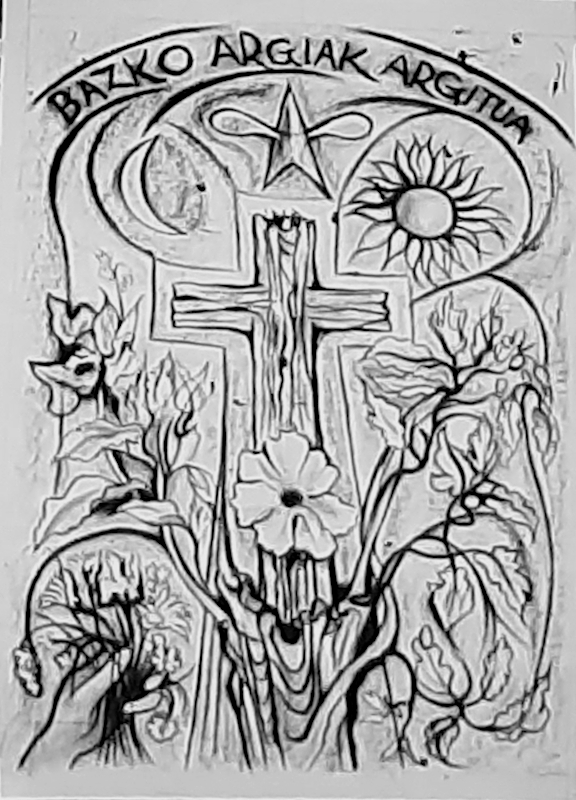
©CharlesCarrere
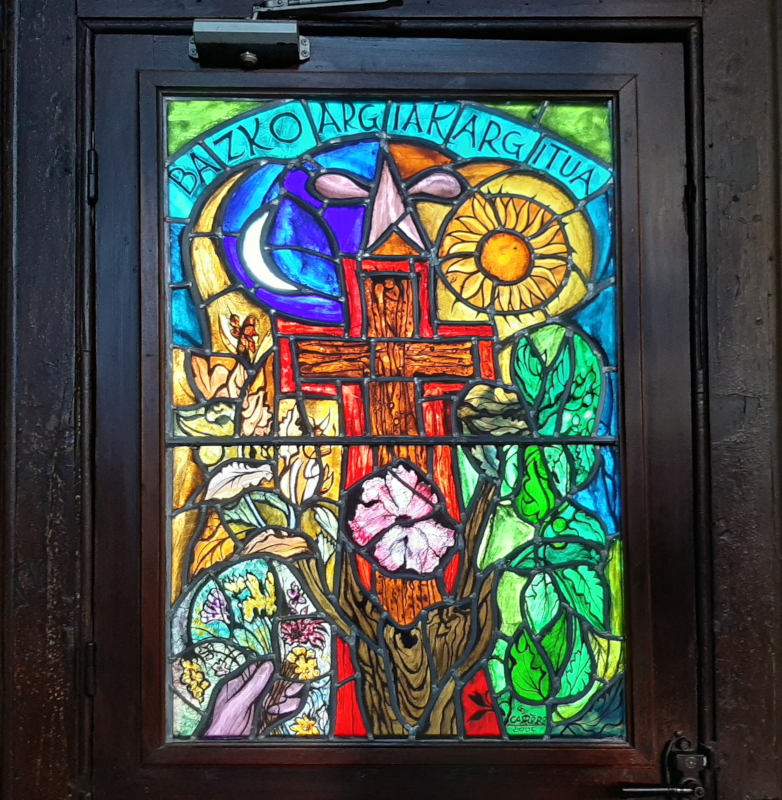
Saint Laurent Church in Urrugne – Photo©JanieC
His religious works is very important. The inventory is underway and the Focus will present the most outstanding works with explanations of the symbolism they contain.
Back to the Master stained glass artist main page
Or return to the home page
This post is also available in: French

